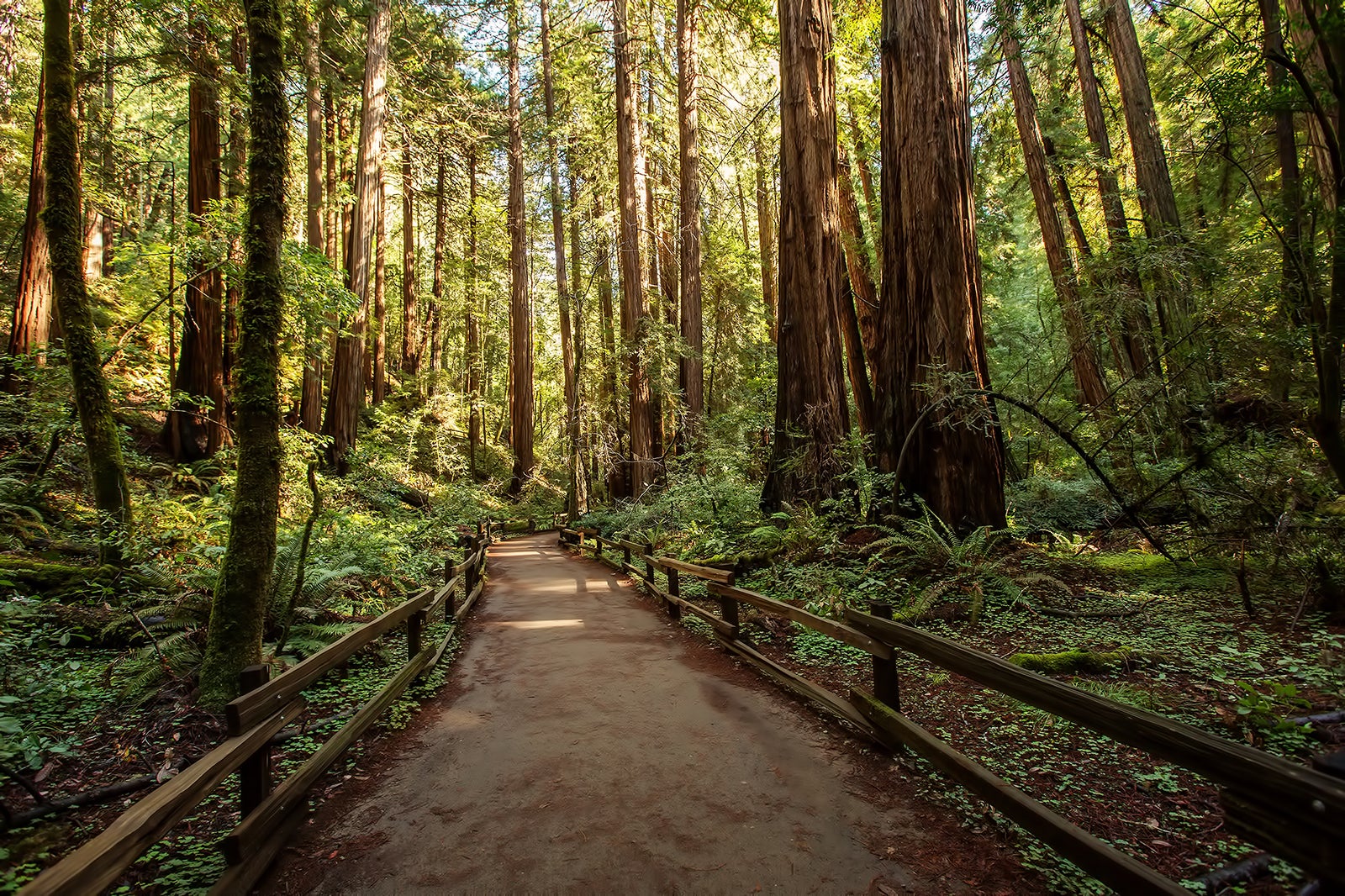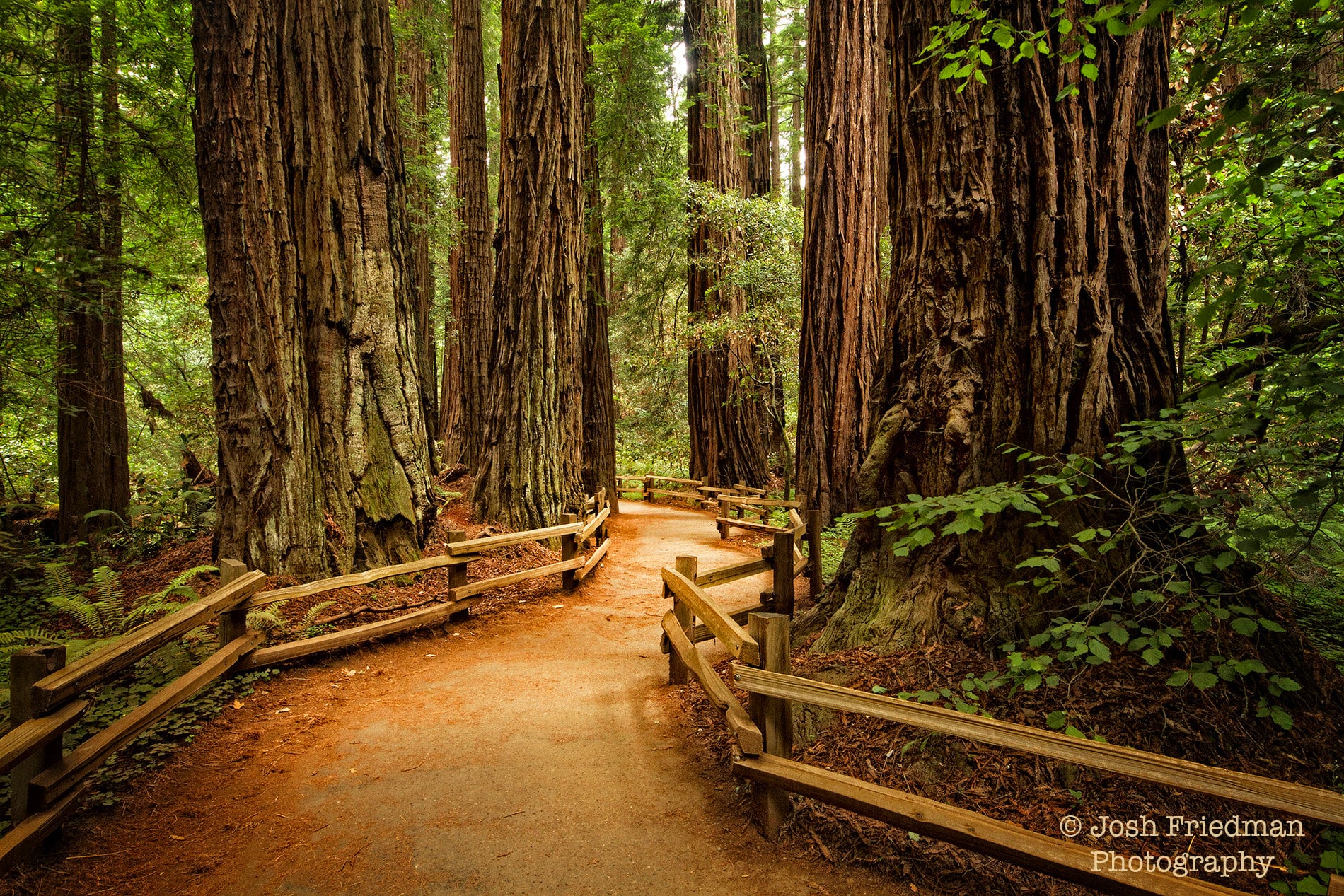
Guardians of Time: Muir Woods and the Enduring Spirit of the Ancient Redwoods
The air changes first. It cools, thickens with the scent of damp earth and pine, carrying a whisper that seems to predate human memory. Then, the light shifts, filtered through a canopy so dense it turns the brightest afternoon into a dappled twilight. Finally, they emerge: colossal, ancient, silent sentinels whose sheer scale humbles and awes. This is Muir Woods National Monument, a cathedral of living giants nestled just a short drive north of San Francisco, a testament to the enduring power of nature and the foresight of those who fought to preserve it.
Stepping into Muir Woods is not merely entering a forest; it is traversing a threshold into a different epoch. Here, the Coast Redwoods (Sequoia sempervirens), the tallest living things on Earth, pierce the sky, some reaching heights of over 250 feet and boasting diameters of up to 14 feet. These aren’t just trees; they are biological monuments, many of them having stood for 600 to 800 years, with the oldest exceeding 1,200 years. To walk among them is to walk through living history, a primeval landscape that existed long before the Golden Gate Bridge spanned its strait or the first gold prospector dreamt of riches.
A Living Ecosystem Forged by Fog

The unique ecosystem of Muir Woods is largely defined by one critical element: fog. Blanketing the coast for much of the year, the fog provides essential moisture that these towering redwoods desperately need. Unlike most trees, redwoods absorb a significant amount of water directly through their needles from the fog. This "fog drip" also nourishes the forest floor, creating a consistently damp environment where ferns unfurl in vibrant green and mosses carpet every surface. Without this constant atmospheric hydration, these majestic trees, with their shallow but wide-spreading root systems, could not survive the dry California summers.
The forest floor itself is a tapestry of life. Redwood sorrel, sword ferns, and huckleberry bushes thrive in the filtered light. The silence, broken only by the chirping of varied thrushes or the hoot of a spotted owl, is profound. This relative quiet is a deliberate feature of the park, as visitors are encouraged to speak in hushed tones, allowing the forest’s natural symphony to prevail. It’s a rare commodity in our hyper-connected world, offering a spiritual balm to the weary modern soul. As the renowned naturalist John Muir himself once observed, "The clearest way into the Universe is through a forest wilderness."
The Fight for Preservation: Kent, Muir, and Roosevelt
The existence of Muir Woods as a protected sanctuary is a story of timely intervention and passionate advocacy. By the late 19th and early 20th centuries, the vast majority of California’s old-growth redwood forests had fallen to the logger’s axe, fueling the booming construction of a rapidly developing state. Only a fraction remained, scattered in increasingly isolated pockets.
One such pocket, a spectacular canyon filled with ancient redwoods just north of San Francisco, caught the eye of William Kent, a wealthy conservationist and congressman. Kent purchased the 611 acres in 1905 for $45,000, specifically to protect it from being dammed and flooded to create a reservoir for the burgeoning city of Sausalito. His intention was to donate the land to the federal government, ensuring its permanent protection.
When President Theodore Roosevelt, a staunch conservationist himself, accepted Kent’s generous offer in 1908, he insisted on naming the monument after Kent. However, Kent, a humble man and an ardent admirer of the Scottish-American naturalist, politely declined. "I would suggest that you name it for the man who has done most for the preservation of our forests, John Muir," Kent wrote to Roosevelt. And so, on January 9, 1908, Roosevelt proclaimed the area a National Monument, forever cementing its name as Muir Woods.
This act of preservation was revolutionary. It marked one of the first times a private citizen had donated land to the federal government for the sole purpose of preserving a natural wonder, and it established a precedent for future conservation efforts. Roosevelt, known for his love of the outdoors and his commitment to establishing national parks and monuments, understood the profound value of such places. He once famously stated, "There are no words that can tell the hidden spirit of the wilderness, that can reveal its mystery, its melancholy, and its charm." Muir Woods embodies this spirit perfectly.
A Visitor’s Pilgrimage: Finding Solace Among Giants

Today, Muir Woods welcomes over a million visitors annually, each drawn by the promise of communion with these ancient titans. A network of well-maintained boardwalks and paved trails winds through the grove, making it accessible to a wide range of abilities. The main loop trails, ranging from a half-hour to 1.5-hour walks, guide visitors past some of the most impressive trees, including "Cathedral Grove" and "Bohemian Grove," where the sheer density and height of the redwoods create an almost spiritual atmosphere.
For many, the experience is deeply personal. Children marvel at the scale, their faces upturned in wonder. Adults often find themselves quieted, their usual urban anxieties fading in the presence of such ancient wisdom. There’s a palpable sense of perspective here; human concerns feel trivial when dwarfed by living organisms that have witnessed centuries unfold. It’s a powerful reminder of our place in the natural world and the fleeting nature of our own existence. John Muir’s words resonate: "Thousands of tired, nerve-shaken, over-civilized people are beginning to find out that going to the mountains is going home; that wilderness is a necessity; and that pure mountain air is a solace for mind and body."
Threats and the Future of Stewardship
Despite its protected status, Muir Woods is not immune to the challenges facing natural environments worldwide. Climate change poses a significant threat, primarily through altered fog patterns and increased drought conditions. The redwoods, so dependent on consistent moisture, are vulnerable to prolonged periods of dryness. Rising temperatures also increase the risk of wildfires, though the redwoods themselves are remarkably fire-resistant, their thick bark providing protection.
Human impact, too, requires careful management. The sheer volume of visitors, while a testament to the park’s allure, can lead to trail erosion, habitat disturbance, and noise pollution if not carefully controlled. The National Park Service implements strict policies, including designated trails and limited parking, to mitigate these effects. Reservations for parking and shuttle services are now mandatory during peak times, a necessary step to manage visitor flow and preserve the delicate ecosystem.
Conservation efforts at Muir Woods are ongoing. Park rangers and scientists continuously monitor the health of the forest, studying the effects of climate change and human interaction. Efforts are made to restore damaged areas, remove invasive species, and educate the public on the importance of responsible visitation. The goal is to ensure that these magnificent trees, and the unique ecosystem they support, can continue to thrive for generations to come.
A Legacy Enduring
Muir Woods is more than just a collection of old trees; it is a vital reminder of what once was and what can still be if we commit to careful stewardship. It’s a living museum, a biological marvel, and a spiritual sanctuary. It teaches us patience, resilience, and the profound beauty of the natural world. In a world increasingly dominated by concrete and digital screens, the ancient embrace of Muir Woods offers a powerful counterpoint, a place where time slows, and the whispers of history are carried on the wind through the rustling leaves of giants.
As visitors depart, leaving the cool, damp embrace of the redwoods for the brighter, faster pace of the outside world, they carry with them not just photographs, but an intangible sense of renewal. The memory of those towering sentinels, silent and strong, lingers, a quiet promise that some things, with care and dedication, can indeed endure through the ages. Muir Woods stands as a living legacy, a testament to the enduring spirit of the wild and the human capacity to protect it.


